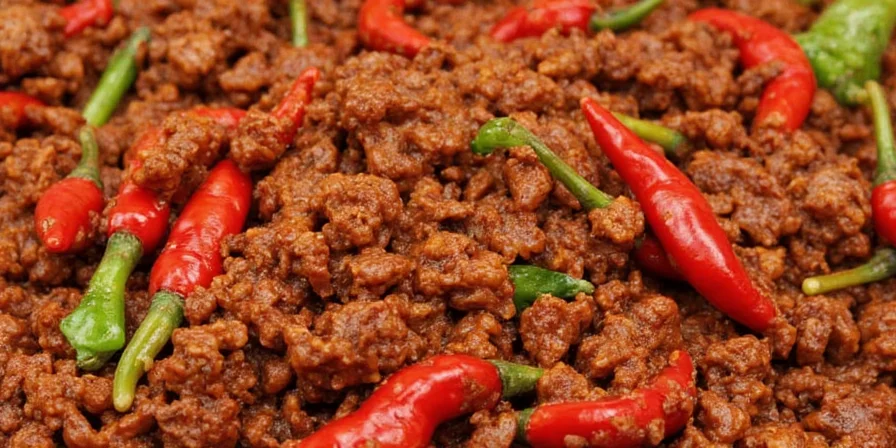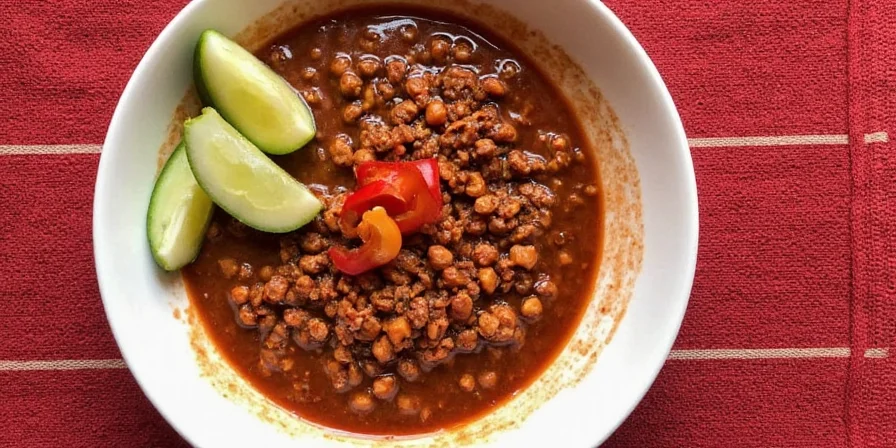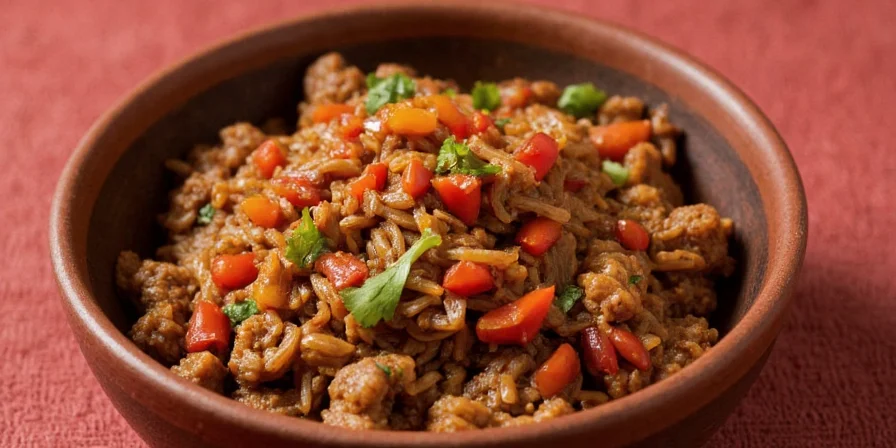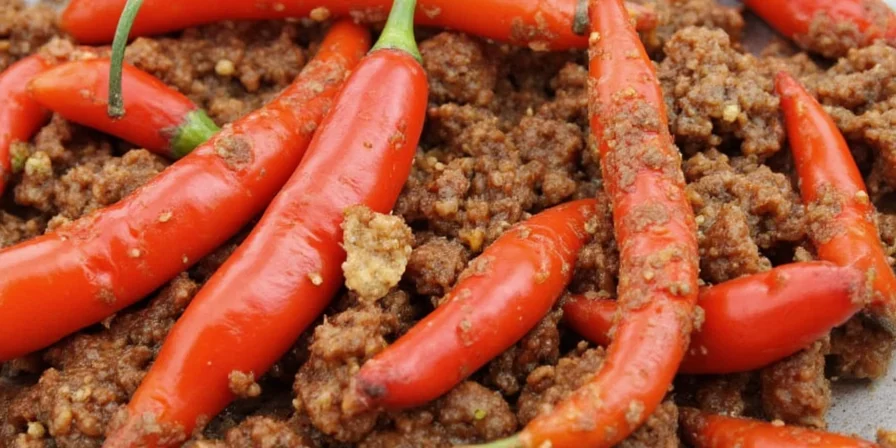Chili Con Carne: A Global Spice Tour Through Its Core Ingredients
Chili con carne — that iconic dish of spiced meat, beans, and tomatoes — is more than just a comfort food favorite. It’s a canvas for cultural expression through spices. From Tex-Mex diners to street food carts in Mexico City, the soul of this dish lies in its main ingredients, each one carrying a story shaped by geography, history, and tradition.
In this article, we’ll embark on a flavorful journey across continents to explore the key components of chili con carne, how they’ve evolved, and why spice matters — literally and figuratively — in every bite.
Table of Contents
- Introduction
- The Meat: More Than Just Protein
- Spices: The Heartbeat of Flavor
- Tomatoes & Tomato Products: The Liquid Gold
- Beans: The Fiber Factor
- Liquids: Simmering Secrets
- Pro Tips: Spice Like a Pro
- Conclusion
The Meat: More Than Just Protein
At the heart of any chili con carne recipe is the meat. Traditionally made with ground beef, modern variations embrace everything from venison to jackfruit (for vegan versions).
| Meat Type | Flavor Profile | Texture | Best For |
|---|---|---|---|
| Ground Beef (80/20) | Rich, savory, slightly fatty | Soft, crumbly texture | Classic chili lovers |
| Chuck Roast (diced) | Deep umami, caramelized edges | Fork-tender chunks | Slow-cooked, rustic-style chili |
| Vegetarian Crumbles | Neutral base; absorbs spices well | Slightly chewy or meat-like | Vegans and vegetarians |

Pro Tip:
- Brown your meat well before adding other ingredients. Maillard reaction = maximum flavor!
- Don’t drain all the fat unless you’re watching calories. It carries flavor!
Spices: The Heartbeat of Flavor
This is where things get spicy — literally! Chili con carne lives up to its name thanks to a robust blend of spices that vary wildly depending on regional influences and personal taste.

The Usual Suspects
- Chili Powder: The star player. Often a blend including chiles, cumin, garlic, and oregano.
- Cumin: Earthy warmth that adds depth.
- Paprika: Smoky sweetness or heat, depending on type.
- Garlic Powder / Fresh Garlic: Adds pungent kick and complexity.
- Oregano: Especially Mexican oregano, which brings citrusy notes.
| Spice | Heat Level | Aroma | Best Used With |
|---|---|---|---|
| Ancho Chili Powder | Low to Medium | Smoky, sweet, fruity | Beef, tomatoes, slow cooking |
| Chipotle Powder | Medium to High | Smoky, fiery, earthy | Tortillas, beans, BBQ fusion |
| Cayenne Pepper | High | Sharp, peppery | For those who like it hot |
Global Twist Ideas
- Add **garam masala** for an Indian-inspired twist.
- Use **ras el hanout** for North African flair.
- Throw in some **Szechuan pepper** if you want a numbing, tingling effect.
Tomatoes & Tomato Products: The Liquid Gold
Tomatoes provide acidity, sweetness, and body. Whether fresh, canned, or pureed, their role is crucial.

Options & When to Use Them
- Canned Diced Tomatoes: Good for chunky texture and even distribution.
- Tomato Sauce: For smooth, cohesive chili.
- Tomato Paste: Add early for deep, concentrated flavor.
- Fresh Tomatoes: Best for summer batches when quality is high.
Beans: The Fiber Factor
While traditional Texas-style chili omits beans, many modern recipes include them for added fiber, protein, and texture.

| Bean Type | Texture | Flavor | Best For |
|---|---|---|---|
| Kidney Beans | Firm, hearty | Mild, earthy | Chunky, classic chili |
| Pinto Beans | Creamy, breaks down easily | Buttery, nutty | Thickening agent, blended chili |
| Black Beans | Firm yet tender | Savory, slightly sweet | Southwestern fusion styles |
Pro Tip:
- If using canned beans, rinse them first to remove excess sodium and prevent sliminess.
Liquids: Simmering Secrets
Whether it’s water, broth, beer, or coffee, the liquid in your chili affects both hydration and flavor development.

- Beef Broth: Classic choice for richness.
- Beer: Adds bitterness and depth. Try a dark lager or stout.
- Coffee: Enhances smoky flavors. Yes, really!
- Wine: Red wine adds acidity and complexity.
Pro Tips: Spice Like a Pro
Want to elevate your chili game? Here are our top pro tips for nailing the perfect pot:
- Layer your spices: Add some at the beginning and more toward the end for a complex profile.
- Taste as you go: Remember, salt and acid balance spice.
- Rest it overnight: Like most stews, chili tastes better the next day.
- Don’t overcook the beans: They can turn mushy if added too early.
- Garnish wisely: Sour cream cools the heat, while cilantro adds freshness.
Conclusion
Chili con carne is far more than just meat and beans in a pot. It’s a culinary symphony, orchestrated by the careful selection and layering of spices, liquids, and aromatics. Each ingredient tells a story — of migration, trade, innovation, and tradition.
So the next time you fire up the pot, remember: you're not just making dinner. You're participating in a global tradition of spice, shared across borders and generations.
Now go forth and spice it up — responsibly, passionately, and with a dash of humor 😉











 浙公网安备
33010002000092号
浙公网安备
33010002000092号 浙B2-20120091-4
浙B2-20120091-4